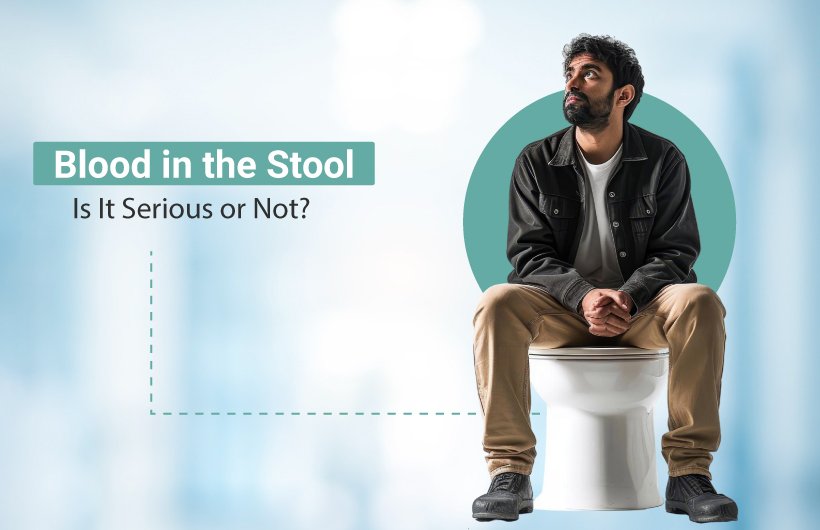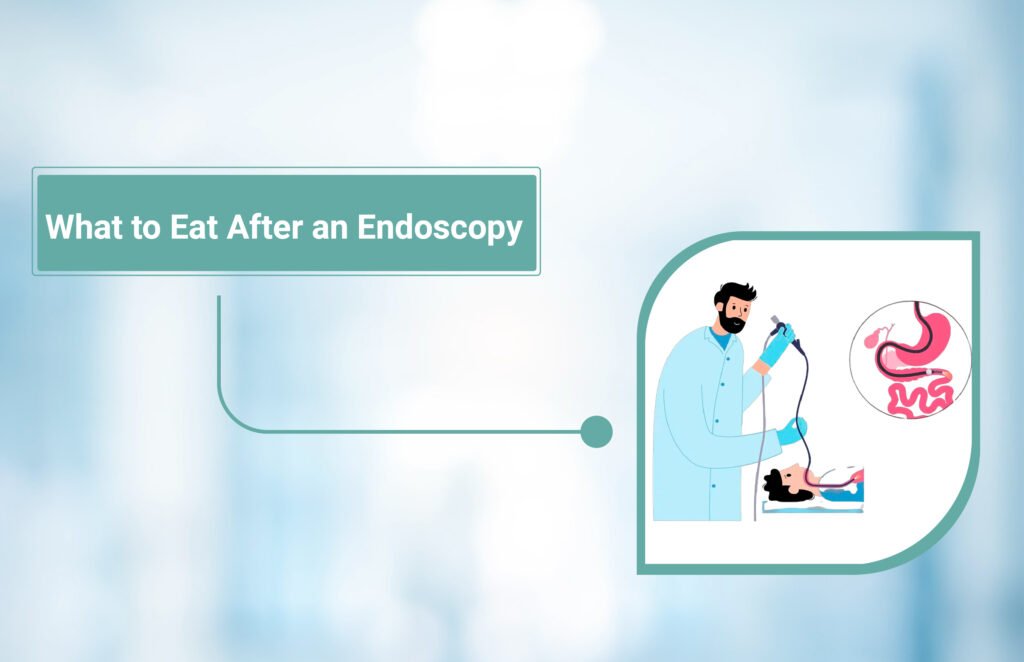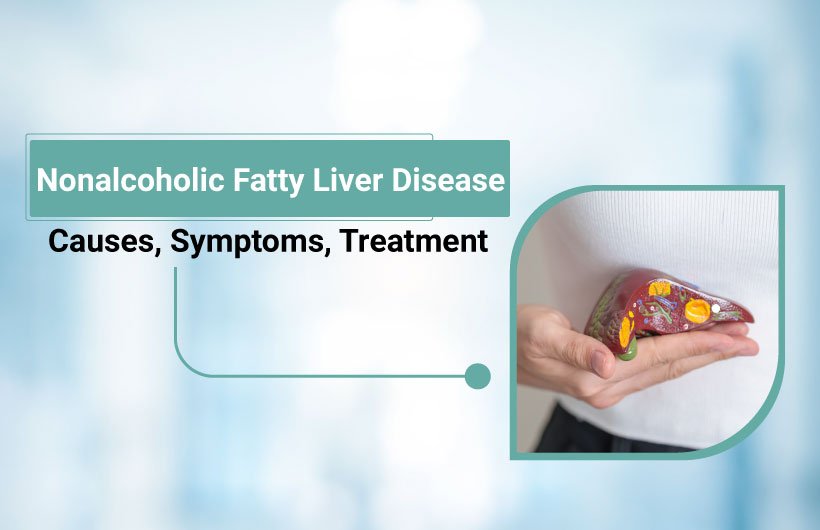Seeing blood in the stool can be alarming. Whether it’s a large amount of bright red blood in the toilet with no pain or darker, tarry stools, rectal bleeding is not something to ignore. While some causes are minor, others could signal a serious problem that needs immediate attention.
Let’s break down what blood in the stool means, explore possible causes, and understand when it’s time to consult a gastroenterologist in Ahmedabad.
What is Blood in the Stool?
Blood in the stool refers to any bleeding that passes through the digestive tract and comes out in or with your bowel movements.
- Visible red blood typically points to bleeding in the lower part of the digestive system, such as the colon, rectum, or anus
- Black, tarry stools (known as melena) usually indicate digested blood from the upper GI tract, such as the stomach or small intestine.
Even if you notice painless blood, it can still be a serious warning sign. That’s why it’s crucial to find out the cause.
Why is there Bright Red Blood in the Toilet With No Pain?
A large amount of bright red blood in the toilet with no pain may be due to:
- Haemorrhoids: Swollen veins in the rectum or anus that can bleed painlessly.
- Diverticulosis: Small pouches in the colon wall that can bleed suddenly and heavily.
- Anal fissures: Though often painful, some minor tears might bleed without noticeable discomfort.
Warning: If you experience repeated episodes or large amounts of bleeding, it could be a sign of more serious issues, like colorectal polyps, inflammatory bowel disease, or even colon cancer. Always consult a doctor for evaluation.
Painful vs. Painless Rectal Bleeding Causes
| Type of Bleeding | Possible Causes |
|---|---|
| Painful | – Anal Fissures – Perianal Abscess – Proctitis (inflammation) – Thrombosed Hemorrhoids |
| Painless | – Internal Hemorrhoids – Diverticulosis – Colorectal Polyps or Cancer – Angiodysplasia |
Common Causes of Blood in the Stool
1. Hemorrhoids
-
Swollen blood vessels inside or around the anus.
-
Usually painless, but may bleed bright red.
-
Blood may appear on toilet paper, on stool, or in the toilet bowl.
2. Anal Fissures
-
Small tears in the anal lining from constipation or hard stools.
-
Cause sharp pain during bowel movements and streaks of fresh red blood.
3. Colorectal Polyps or Cancer
-
Polyps are benign growths that can bleed silently.
-
Bleeding may be intermittent and painless.
-
In advanced cases, bleeding may be mixed with stool or indicate colorectal cancer.
4. Inflammatory Bowel Disease (IBD)
-
Includes Crohn’s disease and ulcerative colitis.
-
Causes chronic inflammation, leading to bloody diarrhea, cramps, and fatigue.
5. Diverticulosis
-
Bulging pouches in the colon can rupture, leading to sudden, heavy rectal bleeding.
-
Typically painless, but serious if bleeding persists.
6. Upper GI Bleeding
-
From ulcers or gastritis in the stomach or small intestine.
-
Blood is digested, appearing as black, tarry stools (melena).
What Does Blood in a Bowel Movement Look Like?
Seeing blood in your stool can be alarming, but the color and consistency often provide important clues about the source of bleeding in your digestive tract. Here’s how to recognize what it might mean:
Stool Blood Color Chart: What the Color Tells You
| Color of Blood | Likely Source | Common Causes |
|---|---|---|
| Bright Red | Rectum, anus, or lower colon | Hemorrhoids, anal fissures, rectal polyps |
| Maroon | Small intestine or right side of colon | Diverticulosis, Crohn’s disease, vascular lesions |
| Black or Tarry | Upper gastrointestinal tract (stomach, duodenum) | Stomach ulcers, gastritis, esophag |
Tip: Bright red blood often coats the stool or appears on toilet paper, while darker blood may be mixed with the stool or appear as tarry, black stools (melena).
Associated Symptoms of Blood in Stool
If you notice blood in your stool along with any of the following symptoms, it could be a sign of a more serious condition:
-
Dizziness or fatigue – May indicate internal bleeding or anemia.
-
Abdominal pain or cramping – Could point to inflammatory conditions or structural issues.
-
Unexplained weight loss – A potential sign of colorectal cancer or inflammatory bowel disease (IBD).
-
Fever or nausea – May suggest infection or inflammation.
-
Mucus in the stool – Common in infections or chronic inflammation like ulcerative colitis.
When to Seek Immediate Medical Help for Blood in Stool
Call your doctor or go to the emergency room if you experience:
-
Large volume of blood in your stool
-
Repeated or chronic bleeding
-
Weakness, fainting, or shortness of breath
-
Severe abdominal pain with blood in the stool
Early evaluation helps detect serious conditions such as colorectal cancer, diverticular bleeding, or ulcers.
Diagnosis & Treatment for Blood in Stool
Diagnostic Tests
Your doctor may recommend one or more of the following:
-
Colonoscopy: Examines the full colon for polyps, cancer, or bleeding sources.
-
Sigmoidoscopy: Focuses on the lower part of the colon (rectum and sigmoid colon).
-
Stool tests: Detect hidden (occult) blood, parasites, or infection.
Treatment Options for Blood in Stool Based on Condition
| Condition | Treatment Approach |
|---|---|
| Hemorrhoids | High-fiber diet, topical creams, or minor outpatient procedures |
| Anal Fissures | Stool softeners, sitz baths, topical medications |
| Colorectal Polyps | Removed during colonoscopy to prevent cancer |
| Inflammatory Bowel Disease (IBD) | Anti-inflammatory medications, immune suppressants |
| Colon or Rectal Cancer | May require surgery, chemotherapy, or radiation |
Final Thoughts: Don’t Ignore the Signs
Noticing blood in your stool is something you should always bring up with your doctor. Even if you have no pain, it could be an early warning sign of a serious condition. Dr. Varun Bajaj encourages you to get a thorough check-up to ensure your digestive health is on the right track. Early detection can save lives.
FAQs
What does it mean if there’s bright red blood in my stool but no pain?
It could be haemorrhoids or diverticulosis, but painless bleeding can also be a sign of polyps or cancer. Get it checked.
Should I be concerned about blood in my bowel movement?
Yes. Even if it’s minor or painless, it’s important to rule out serious causes.
Can haemorrhoids cause a lot of blood in the toilet?
Yes, haemorrhoids can bleed quite a bit, but frequent or large-volume bleeding needs evaluation.
What colour is internal bleeding in stool?
Internal (upper GI) bleeding often results in stools that are black and tarry. Bleeding from the lower gastrointestinal tract often appears as bright red or dark maroon blood.
When should I go to the ER for blood in stool?
Go immediately if there’s a large amount of blood, you feel faint, or have severe abdominal pain.








